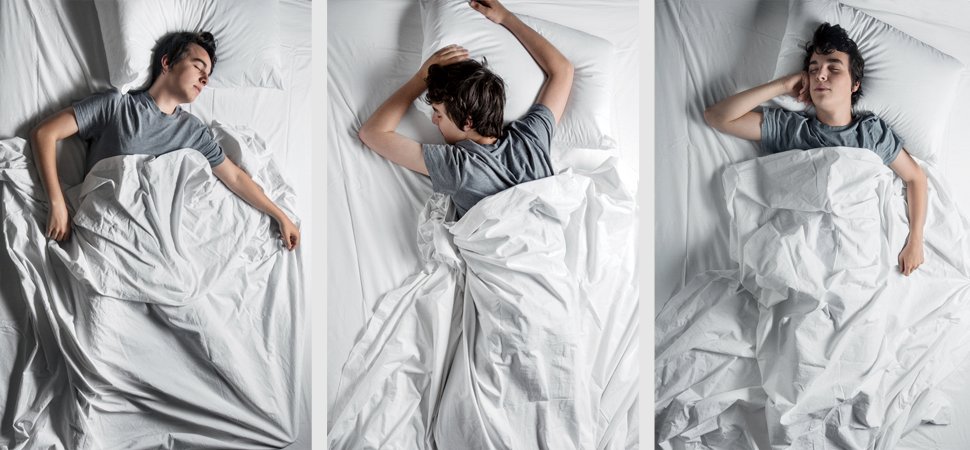
Buying a mattress sucks. The salesmen talk fast, the choices (Tempur-Pedic? Visco-elastic memory foam? PrimaCool gel?) are overwhelming, and the prices are hefty. Yet everyone needs a mattress, meaning the $14 billion industry was ripe for reinventing. Enter Casper, the online bed-in-a-box maker that launched in April 2014. The concept was simple: Produce the best mattress possible at an affordable price, sell a single model, and deliver it quickly, for free, with a 100-day trial period. It worked: Casper had sales of $1 million in its first month. The New York City company has since raised $70 million in venture capital, grown to 120 employees, and hit $100 million in cumulative sales. Co-founder and COO Neil Parikh tells Inc. about solving the problem of friction beneath the sheets.
Reinventing Sleep
In the beginning, it was “Let’s disrupt the mattress industry. It’s broken.” That quickly morphed into “Let’s invent an industry around sleep.” My father is a sleep doctor, and I went to a year of medical school. The mattress industry is a racket. You walk into a store expecting a confusing experience, but you don’t expect the 35 models offered to be basically the same product with different labels. It’s worse than buying a used car–at least there you have data points like horsepower, air conditioning, and a Carfax report. But who knows how many springs are good for you?

After eight months of testing hundreds of mattress types, we learned that people need similar things, like back support, so we decided to make one mattress. Memory foam is super supportive, but it gets hot and it’s not very bouncy, so we added a layer of open-cell latex foam, which keeps you cool and adds just the right bounce. We’re the first company to put memory foam and latex together and have a patent pending.
Luke Sherwin, Casper’s chief creative officer and one of our co-founders, and I lived in a fourth-floor walkup and realized there was no way to get a queen-size bed up our stairs easily. We said, “What if we could compress a mattress to fit into a box the size of a dorm refrigerator?” This way, we can deliver it via UPS so it costs us a 10th of the price to ship. Plus, people can test the mattress in their homes. You have 100 days to try our mattress. If you don’t like it, we’ll come get it for free. Now, a few companies do this, but not long ago most stores required a several-hundred-dollar restocking fee.
Early on, a couple made a YouTube video about how our bed wasn’t exactly right for them but the experience was amazing. That is the goal. Those customers are still going to talk positively about our company and might even buy our sheets and pillows. Our return rate is low, and we try to donate those mattresses to a local charity, which is more cost-effective than taking them back halfway across the country to refurbish and resell.
Catering to Customers
People usually buy a mattress about every eight to 10 years. Most companies don’t care who you are–they’ve made their sale. For us, that’s the start of a long-term relationship. Half of our customers talk to someone in-house. The questions are technical, as in “Do I need a box spring?” (No.) “Does it work on this type of bed frame?” (Yes.) We use every conversation to learn something about the customer. We know how long you’ve had your bed, and if you have kids or a pet. We keep track of all that, and then send people anniversary gifts, or dog beds. It’s not about just selling you a bed. It’s “How do I make this person our biggest advocate?”
Casper Labs came from that customer database. We have 15,000 customers who are part of our product-development process. They come to events, and test prototypes. Many are obsessive about sleep. They send us sleep tracker data and say, “I tested this product versus this one, and here’s what I found.” That process has helped us build a group of evangelists.
We consider ourselves a tech company first. We’ve created software that lets us know exactly where our raw materials and mattress components are and how to forecast what and when to build. If the UPS truck is delayed, we can reach out to the customer and say, “Hey, we’ve been tracking your order and noticed something has gone awry.” If you’ve bought a mattress, instead of having to find your order number, our customer-care expert knows who you are without even asking.
By selling directly to customers, we don’t have the same cost structure. We thought about how much we needed to spend on the materials as well as service and returns. There’s a psychological barrier around $1,000, and most people spend $500 on their first bed. We had to be affordable enough so they could feel that they could reach up.
More Than Just a Bed
There are many more ways to create an ideal sleep environment. The day after we launched, we started working on pillows and sheets. We questioned how both are produced and then made prototypes. We tried 100 different densities of materials for pillows, including buckwheat, and had customers try many of them. It took 16 months to come up with one pillow that works for everyone. We did a similar process with our sheets and found most people want them to breathe well and last a long time. We’ve been taught to believe that 1,000-thread-count hotel collection sheets are what everyone wants. It turns out, the more threads, the more filler fiber, which means the sheets are going to sleep really hot. Our perfect balance is 90 threads one way, 110 the other. We haven’t decided what the next product is. Customers have asked for everything from lights to sleep trackers. But we do know the category is enormous.
Whole Foods helped shape the healthy-foods movement. We want to do the same for sleep.
Spring Awakening

While still small, direct-to-consumer mattress startups like Casper (co-founded by Neil Parikh, left) are keeping the sleep giants up at night. Mattress Firm, which in November announced it would acquire Sleepy’s, making it the largest U.S. mattress chain, has launched an online bed-in-a-box arm called Dream Bed, and it’s not the only incumbent to pull a copycat move. Given that in 2014 some 35 million people bought mattresses in just the U.S., many potential converts remain.
600Number of mattress companies in the United States |
$3 BillionAnnual revenue of top mattress maker Tempur-Sealy |
47 Percentof mattresses are sold in mattress specialty stores |
8-10 YearsAverage length of time people |
100+Number of mattress models sold |
1Number of mattress models |



